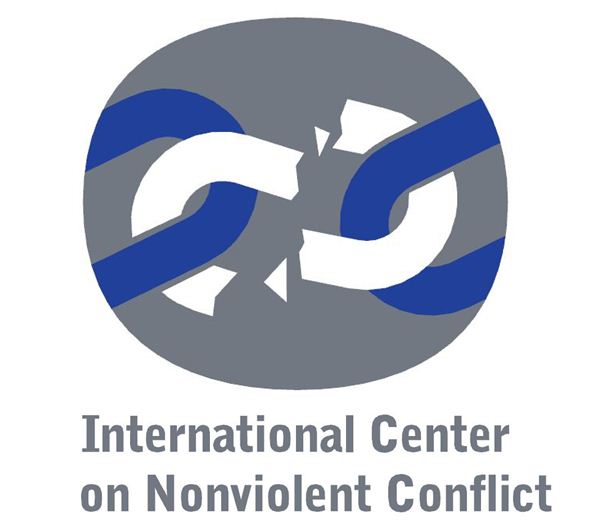No name
Describes Sampat Pal and the now 20,000 strong Pink Gang she founded, which uses ‘social power’ to defend individual women treated unjustly and to challenge misogyny in general, The women carry sticks and sometimes attack corrupt politicians and policemen. See also: Sampan Pal, Anne Berthod, Warrior in a Pink Sari , New Delhi, Zubaan Books, 2012 , pp. 220
Records the experiences of this distinguished Irish travel writer during her cycling tour of Northern Ireland in 1976-77. Briefly recapitulates the historical background to the Troubles, and re-examines the rival myths and prejudices of the Protestant and Catholic communities, both of whom warmly welcomed her while remaining suspicious of each other. Informed by genuine affection for the people of Northern Ireland and an optimism about its future in the longer term though discounting the possibility of a united Ireland.
This article presents a comprehensive account of Mahatma Gandhi’s life, work and thought and explores his continuing significance.
Muslim women’s struggle for emancipation is often portrayed as a showdown between Western and Islamic values, but Arab feminism has existed for more than a century. This documentary recounts Arab feminism’s largely unknown story, from its taboo-shattering birth in Egypt by feminist pioneers to viral Internet campaigns by today’s tech-savvy young activists during the Arab Spring. From Tunisia, Egypt, Algeria, Morocco, Lebanon and Saudi Arabia, filmmaker and author Ben Mahmoud charts the progress of Arab women in their long march to assert their full rights and achieve empowerment. Features previously unreleased archival footage and multigenerational interviews.
Reports on a new app, created by the Sydney-based National Justice Project, that enables Aboriginal people to record police discrimination and violence against them. It is being adopted across Australia. The author sets this Australian initiative in the context of disproportionate jailing of Aborigines and frequent police discrimination, as well as the wider global movement to use film to highlight police injustice, with examples from the USA and Canada.
One year after the outbreak of mass protests in October 2019, the authors note that thousands turned out to mark the anniversary, but that this time the protests were brief. The Covid-19 lockdown, 'protest fatigue' and suspicion of infiltration of the movement have combined to reduce active support. The main focus of this analysis is a survey commissioned by Chatham House of over 1,200 Iraqis to gauge public opinion about the October 2019 protests. It finds that 83 per cent of those surveyed believed most or all the demonstrations were justified, and only 10 per cent strongly disapproved, and suggests that most Iraqis support the main complaints of the activists.
An abbreviated and slightly modified version of Sharp’s general argument in The Politics of Nonviolent Action. Includes 23 brief case studies of campaigns from the Russian Revolution of 1905 to the Serbian people power of 2000 (some written by Sharp’s collaborators: Joshua Paulson, Christopher A. Miller and Hardy Merriman).
Interviews with both Serbs and Albanians about key episodes in the escalation from 1981 to 1990 are juxtaposed with a written history. See also: Mertus, Julie, ‘Women in Kosovo: Contested terrains – the role of national identity in shaping and challenging gender identity’ in Sabrina P. Ramet (ed.), Gender Politics in the Western Balkans, University Park PA, Pennsylvania State University Press, 1999, pp. 171-86.
Also covers negotiations, the Oslo Accords and the new Palestinian Authority.
The whole issue is dedicated to ‘Peasant Movements in Latin America’ including 2 articles on MST.
Examines the political contexts, nature of the movements against nuclear power and their tactics, and government responses.
On the demonstration in Red Square, Moscow, against the Soviet invasion of Czechoslovakia in August 1968, and subsequent trial and sentences.
Matt Taibbi discusses Eric Garner’s life and work as a cigarettes dealer, and his subsequent killing by the police of New York that strengthened the Black Lives Matter movement and protest. He reports on how he become targeted by the police, and allegedly mistaken by police officers on the day of his death. He touches upon his problematic personal and health conditions, within the wider context of the criminalisation of drugs policies in the United States of America. The work expands on Garner’s life and killing, contextualising its narration on the 2008 Bloomberg’s policy of tax increase on cigarettes of 400% per pack, which – Taibbi argues – motivated Eric Garner to sell cigarettes to people who couldn’t afford them. Additional contextualising elements to the analysis that Taibbi offers are the ‘broken windows’ policing, computerised policing and statistical analyses on crime rate and the inherently racialized imposition of order that stems from them.
The main emphasis of this book is on Ayub Khan’s government, but chapter 9 ‘The last phase’ (pp. 237-71) covers the ‘132 days of uninterrupted disturbances’. Stresses the rioting and factionalised violence, but notes the importance of the urban working classes and the students.
Covers Canada, New Zealand and the USA.

 The online version of Vol. 1 of the bibliography was made possible due to the generous support of the
The online version of Vol. 1 of the bibliography was made possible due to the generous support of the  The online version of Vol. 2 of the bibliography was made possible due to the generous support of
The online version of Vol. 2 of the bibliography was made possible due to the generous support of